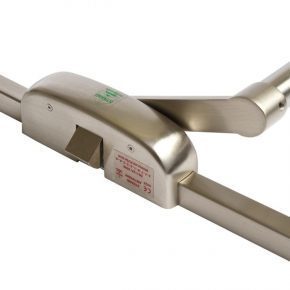
What is COP and EER? Glen Dimplex investigate…
What is COP and EER and how do they affect the choice of energy efficient HVAC technology designed to reduce carbon emissions and achieve compliance? GDHV investigate…
What is COP and EER?
The Coefficient of Performance (COP) and Energy Efficiency Ratio (EER) are measures of a heat pump or heating and cooling solution’s efficiency. They indicate a ratio of useful heating or cooling produced by the unit against the energy it consumes. For example, the COP of a heat pump that can provide 3kW of heat against the input of 1kW of electricity is 3. The EER that generates a cooling effect of 12BTU against the input of 1kW of electricity is 12.
Can COP and EER be used to establish the overall energy efficiency of a heating or cooling unit
In simple terms, the higher the COP or EER, the more energy efficient the heat pump is. This is helpful as a relatively simple efficiency qualifier calculated as a punctual value at a given condition. As we know, however, the energy efficiency of heat pumps can change based on many factors, including for example variations in external temperatures, such as those from seasons.
The load requirement for heat pumps also changes, especially in temperate climates such as the UK. The Seasonal Coefficient of Performance (SCOP) and Seasonal Energy Efficiency Ratio (SEER) consider the energy efficiency of a heat pump throughout the entire heating and cooling season, providing a more accurate comparison of likely installed performance than COP.
SCOP can be calculated for more complex multi-unit solutions too, giving an important performance indicator for HVAC systems such as communal ambient loops that utilise in-apartment water source heat pumps and air source heat pumps as central plants.
What do COP and EER tell us about carbon emissions?
When used with the Carbon Emissions Factor (CEF), COP and EER can be used to derive the carbon emissions produced by a heat pump. This is relevant in the context of compliance with the anticipated uplifted Part L.
When introduced, SAP10 will reduce the CEF of electricity by more than half, from 0.519 CO2/kWh to 0.233 CO2/kWh. Adjustments made to other fuels will be negligible. This means that to achieve the expected carbon reductions indicated by the Future Homes Standard, heat pumps are likely to become the default technology.
To find out more about how heat pumps can help reduce carbon emissions and improve the energy efficiency of your development, contact one of GDHV’s HVAC specialists today.
Latest news

19th April 2024
ASSA ABLOY: Access solutions can impact sustainability performance across the full life-cycle of a building
Embedding sustainability within any organisation requires a broad, strategic perspective. Scrutiny should include the physical infrastructure itself: According to the IEA, buildings consume around 30% of global energy*. ASSA ABLOY has more…
Posted in Access Control & Door Entry Systems, Architectural Ironmongery, Articles, Building Industry News, Building Products & Structures, Building Regulations & Accreditations, Building Services, Case Studies, Doors, Facility Management & Building Services, Information Technology, Research & Materials Testing, Retrofit & Renovation, Security and Fire Protection, Sustainability & Energy Efficiency, Video of the Week
19th April 2024
British weather doesn't dampen spirit for new HMG Garden Paint
Despite one of the wettest starts to the year on record, customers are starting to plan for brighter days with HydroPro Garden Paint from HMG Paints.
Posted in Articles, Building Industry News, Building Products & Structures, Garden, Innovations & New Products, Paints, Paints, Coatings & Finishes, Restoration & Refurbishment, Retrofit & Renovation, Site Preparation, Sustainability & Energy Efficiency, Waste Management & Recycling
18th April 2024
Abloy UK showcases new digital portfolio at The Security Event 2024
Abloy UK is set to unveil its latest line-up of access control systems at The Security Event 2024, welcoming guests to explore its cutting-edge electromechanical and digital solutions on stand 5/F50.
Posted in Access Control & Door Entry Systems, Architectural Ironmongery, Articles, Building Industry Events, Building Industry News, Building Products & Structures, Building Services, Doors, Exhibitions and Conferences, Facility Management & Building Services, Health & Safety, Information Technology, Retrofit & Renovation, Security and Fire Protection
18th April 2024
Strand is a Failsafe Choice for Emergency Exit and Panic Hardware
In times of emergency, you’re in safe hands with Strand Hardware. Although there are many considerations for building specification, few decisions can be as critical as selecting the right emergency exit/panic hardware.
Posted in Access Control & Door Entry Systems, Architectural Ironmongery, Articles, Building Industry News, Building Products & Structures, Building Services, Doors, Facility Management & Building Services, Health & Safety, Restoration & Refurbishment, Retrofit & Renovation, Security and Fire Protection
 Sign up:
Sign up: